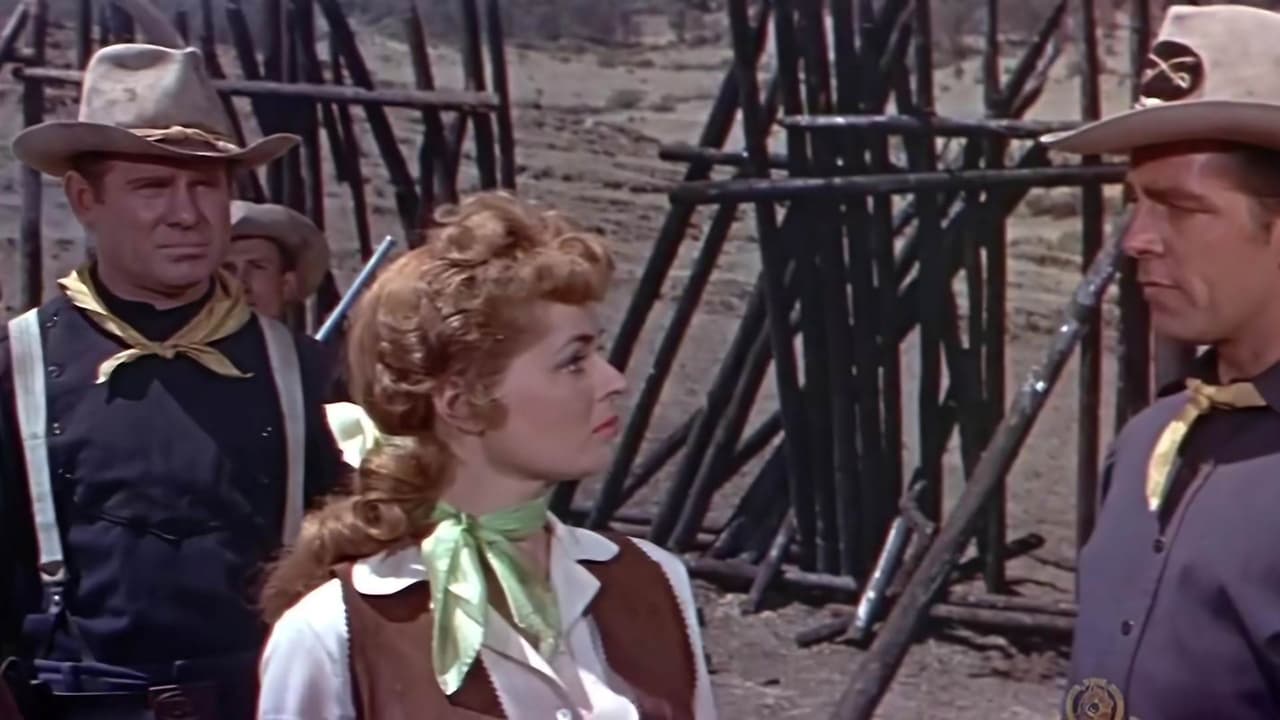ckjarrett
TCM played this last night. It's cheap and shallow Saturday matinée stuff as the other comments suggest. I noticed two things: the day-for-night shots look good but the director(s) rarely used closeups. Most of the shots are long or waist shots, or two shots.This was an early CinemaScope production and perhaps they were limited by the lenses they had (the lenses were not plentiful at this time, especially to non- Fox producers). "Sitting Bull" was the first independent production to be shot in CinemaScope. This was W. R. Frank's last feature film production; he was a Minneapolis, MN theatre owner. The world premiere was held August 19, 1954 in Sioux Falls, SD. What did the Sioux Falls cinema-goers think of this picture being shot in Mexico?! It opened October 7, 1954 at the State Theatre in Minneapolis and Paramount in St. Paul. Both of the cities' film critics, Will Jones and Bill Diehl, hated the film. Comment cards were handed out at both theatres. A trade magazine item in April 1953 said that Frank had set May 20 as the production's start date, but decided to put it off until July when CinemaScope equipment was available. As early as 1950 actors such as Victor Jory were announced as being signed for this production. Later, names such as Boris Karloff and Dennis Morgan were mentioned in the trade press.
alexandre michel liberman (tmwest)
The best thing that can be said about this film is that it had good intentions. What makes of it almost a camp movie is the unreal, primitive, simplistic way that Sitting Bull, the battle of Little Big Horn, and all events related to it are presented. There are no qualms here about changing historical facts and the unreal attitudes of Major Bob Parrish (Dale Robertson) and also of Sitting Bull are very hard to accept. It was much more complex than that, as it can be seen on the most accurate film made so far about it "Son of The Morning Star". The fact that it was made on a big budget, Cinemascope, and has good battle scenes makes it easier to see. It also had the technical advice of "Iron Eyes Cody" who sure knew a lot about it, but probably kept most of it to himself.
bsmith5552
"Sitting Bull" as one might expect, takes place at the time of the infamous and oft filmed "Custer's Last Stand".The story involves the efforts of the fictional Major Bob Parrish (Dale Robertson) and Sioux Chief Sitting Bull (J. Carroll Naish) to prevent a war between the Sioux nations and the U.S. Cavalry. On one side, Sitting Bull's chiefs led by Crazy Horse (Iron Eyes Cody) and Colonel Custer (Douglas Kennedy) on the other push their superiors into war.The requisite love triangle involves Parrish, the General's daughter Kathy (Mary Murphy) and newspaperman Wentworth (william Hopper). Kathy turns away from Parrish when he is charged with insubordination and reduced in rank to Captain. She then becomes engaged to Wentworth.Parrish meanwhile with the assistance of former black slave "Sam" (Joel Flueller)arranges a meeting between President U.S. Grant (John Hamilton) and Sitting Bull. However, before the meeting can take place several incidents occur and war breaks out culminating with Custer's last stand at the Little Big Horn.J. Carroll Naish lends dignity to his portrayal of Sitting Bull. We see him as an intelligent caring and cautious leader who will stoop to war only as a last resort. In a move unusual for its time black actor Joel Flueller was cast in one of the leading roles in the film.The battle scenes are spectacular and well staged by director Sidney Salkow. In spite of the contrived Hollywood ending, this western is a lot better than some would have you believe.
frankfob
Cheap, stupid, maddeningly idiotic western supposedly about Sitting Bull and the Battle of the Little Big Horn. Everything about this movie is tenth-rate--the acting is terrible, the script is absolute horsecrap with not even a PRETENSE of historical accuracy, the photography is awful, at times the camera actually shakes . . . you name it, this movie sucks at it. One of the most glaring examples of its almost complete incompetence is in the battle scenes. They'e stiff, mechanical and wretchedly directed; it looks like the actors playing the soldiers and Indians got tired of standing around waiting for someone to tell them what to do and went ahead and did it themselves. Even more irritating is the fact that the same battle scenes are replayed every 30 seconds or so, apparently in hopes that no one would notice that there wasn't enough footage shot to show a complete battle scene. The movie was filmed in Mexico (another stupid mistake by the filmmakers; the hilly, boulder-strewn, semi-desert Mexican terrain is nothing whatsoever like the rolling prairie country that was the actual locale of the battle) by American director Sidney Salkow and Mexican director Rene Cardona. Separately they were, at best, mediocre directors; together they merged into a really lousy one.All in all, this is a complete botch job at every conceivable level. Don't bother wasting your time on it.


 AD
AD



